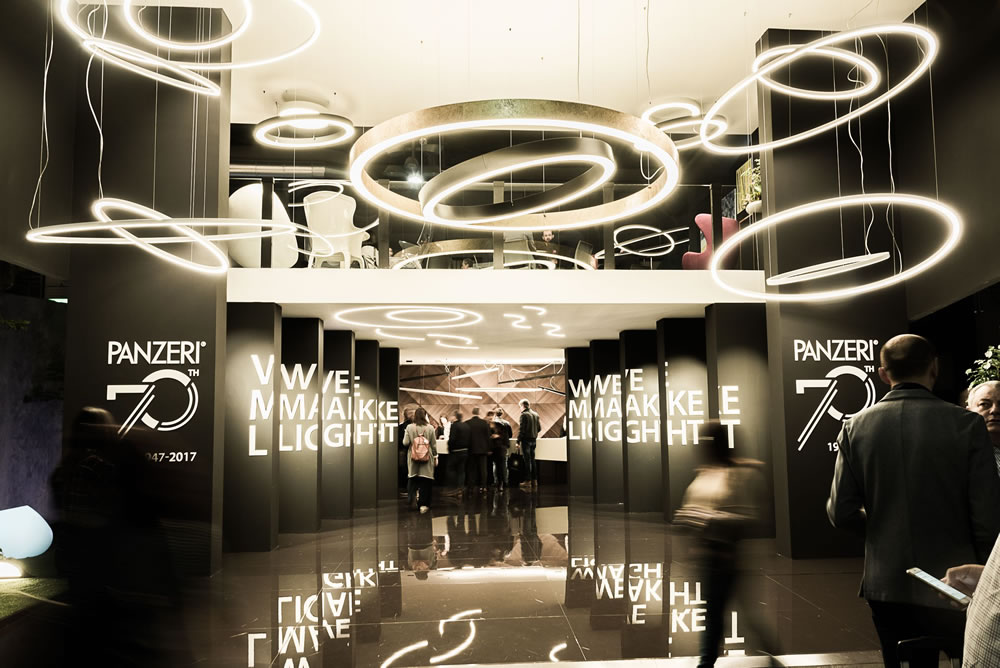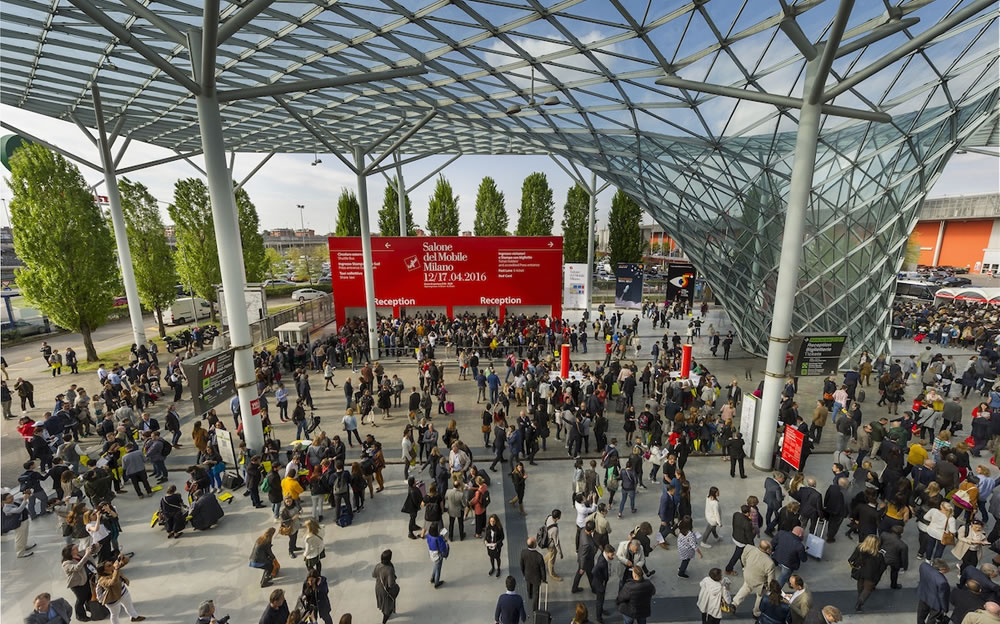In our last post, we talked about the special 2020 edition of Milan Design Week that, due to the coronavirus, will have place in June in an innovative digital version.
So, what is it and, above all, how has born the one event that is able to transform Milano into the world capital of design every year?
SALONE DEL MOBILE: A STORY THAT LASTS FOR DECADES
Talking about Milano Design Week essentially means talking about Salone del Mobile and Fuorisalone. And nothing can make you breathe the atmosphere of Milan, its dynamism and identity as much as a visit to the city in that week of April.
Know the evolution of this eventi means to know the evolution of the city itself, industrial and commercial engine of Italybefore and meetingpoint for creatives from all over the world nowadays.
SALONE DEL MOBILE STARTS IN 1961
It all started in 1961, thanks to the impulse of the Organizing Committee of the Italian Furniture Fair, which imagined a major international event to showcase interior solutions and home furnishings at the Fair. Since then, the event became a regular date in September.
The Salone del Mobile is, according to the organizers of the Fuorisalone, the ‘‘commercial soul and driving force’’ of Design Week, the indispensable starting point at a time of great development for the sector that, after a few years, had in the “Hall 30” his ‘‘Mecca of design’’.
Interior design had already begun to develop its own language and this is how, in the late 1970s and, especially, the 1980s, many followed the example of ‘‘Cassina’’ and began to open their showrooms in the city, taking the Salone out of its usual context.

EIGHTIES: THE FUORISALONE YEARS
What has been established as ‘‘Fuorisalone’’ is, therefore, an event that invades Milan during the Salone del Mobile and has its roots in the initiative of the interior designers of the eighties. This is not the case of a fair event: it is something more lively, dynamic without a central organization, which over time has been transformed and expanded, involving the entire urban area of Milan and other sectors: technology, communications, art, fashion and much more.
If the Salone del Mobile is the institution, the Fuorisalone is colour and fantasy, in a symbiosis that has benefited both.
IN 1991 THE FIRST WEEK OF THE DESIGNER
Born from below, almost as an alternative, anarchist street fair of ‘‘Fuorisalone’’ was mentioned for the first time in 1983 in the magazine ‘‘Abitare’’, which related the phenomenon in a report. But it is only in 1991 that, with the definitive closing of the Fair and the transfer of the Salone del Mobile in April, the magazine ‘‘Interni’’ created what will later be considerated the first official Fuorisalone guide. Organizing the first Designer Week in the ‘‘empty space’’ left by the Salone del Mobile, it was established as a reference point for the event.
‘‘ZONA TORTONA’’: IN 2000 THE FIRST DESIGN DISTRICT
The 2000s were, however, the years of the consecration of Zona Tortona, a former industrial area behind Porta Genova and Navigli, where the Museum of Cultures (Mudec) is now located right in a disused factory.
It was the first territorial brand project, developed around Tortona, Savona and Bergognone, making it the first district of Milanese design. The protagonist was, without a doubt, the historic Superstudio, another ex-industrial space that, in 2000, opened the doors to design, giving way to a trend that would later be adopted as a model and ‘‘copied’’ from other historic Milanese neighborhoods.
Today many other spaces follow: ‘‘Milano Space Makers’’ (including Opificio 31), BASE, Savona 18 Suites, in a successful attempt at urban marketing and redevelopment that, over the years, will multiply the designdistricts, which are difficult to catalog today.

FUORISALONE AND DESIGN CONQUER MILAN
Among all, deserves to be mentioned the Brera Design District, in the historic Milanese art district that houses the famous Pinacoteca and the prestigious Academy, certainly deserves to be mentioned.
Then, among the wonderful Sant’Ambrogio basilica and the memorable Cordusio square, the Teatro alla Scala, the San Lorenzo basilica and Via Torino, there is the Cinque Vie district, which reveals a part of old Milan.
Heading north, there is the Isola district, around the green and highly appreciated ‘‘Bosco Verticale’’ skyscraper, the iconic Unicredit skyscraper in the new Piazza GaeAulenti, close to via Farini, viale Stelvio and via by Gioia, where you can find the Design Village, the Milan Design Market.
Let’s not forgetforget Bovisa and the urban regeneration project ‘‘The Design Republic’’ in which collaboration is a bargaining chip, the ‘‘Energy Wall’’ and, above all, the Pirelli Hangar Bicocca with the ‘‘Seven Heavenly Palaces of Anselm Kiefer ’’, now a cultural landmark together with the Prada Foundation.
THE FURNITURE FAIR IS NOW 60 YEARS OLD
What is Milan during the Milan Design Week goes beyond pure design and even beyond the commercial aspect: it is imagination, innovation, exchange, redevelopment.
A party for creatives of all kinds in the city that, since 1933, has hosted the Triennale Art Palace, which has always been an international pillar for the world of architecture and interior design.
We have no doubt that the digital version of the Fuorisalone will be a success, but excuse us if we will wait for 2021, when Milan Design Week hopefully will returns with all its authenticity to celebrate the first sixty years of the event.
An event into the event, after more than 386 thousand visitors from 181 countries in 2019, that certainly generates great expectations.

